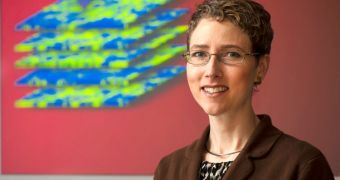The unique abilities of superconducting materials – including allowing electricity to pass through with no resistance – may spawn from flaws in their own structure, a team of experts from the Purdue University proposes in a new study.
The idea comes at a time when research groups around the world are working very hard on creating the cleanest and purest superconducting material sample. What the Purdue team is saying is that these perfect samples may in fact be less suitable for practical applications than the flawed ones.
Experts at Purdue, led by associate professor of physics Erica Carlson, studied copper-oxygen-based superconducting crystals, looking at dark lines of electrons on their surface. They used a series of special techniques to map some of these lines. Each of the features was just four atoms wide.
These flawed lines displayed a specific pattern that was not the same as what researchers were expecting to find in the crystal. These lines were basically put together differently than the rest of the material they were a part of.
Scientists with the research group interpreted these findings as implying that the electron lines were responsible for allowing the material to remain superconducting at very high temperatures.
“This material is ceramic, like your dinner plates, and it has no business conducting electricity, but under the right conditions it conducts electricity perfectly with zero energy loss,” Carlson explains.
“A better understanding of how and why this superconductor works could help us design better ones. If we can create a superconductor that works at high enough temperatures, it could transform how we use and generate energy,” she goes on to say.
If scientists are able to generate superconductors that work at room temperature, then they could literally change the world. The materials would be used to create zero-energy-loss wires for power grid, levitating trains, and permanent magnets for wind turbines and other high-tech applications.
“We want to move beyond trying to get rid of disorder, striving for unattainable purity in the materials we examine, and instead take the disorder into account and use it to our advantage,” the team leader adds.
“These little patches of imperfection where things aren't lined up in a perfect crystal lattice are important, and old methods that overlooked them fail to capture important physics. The flaws in the lines are like a fingerprint. They reveal the identity deeper inside,” she concludes.

 14 DAY TRIAL //
14 DAY TRIAL //